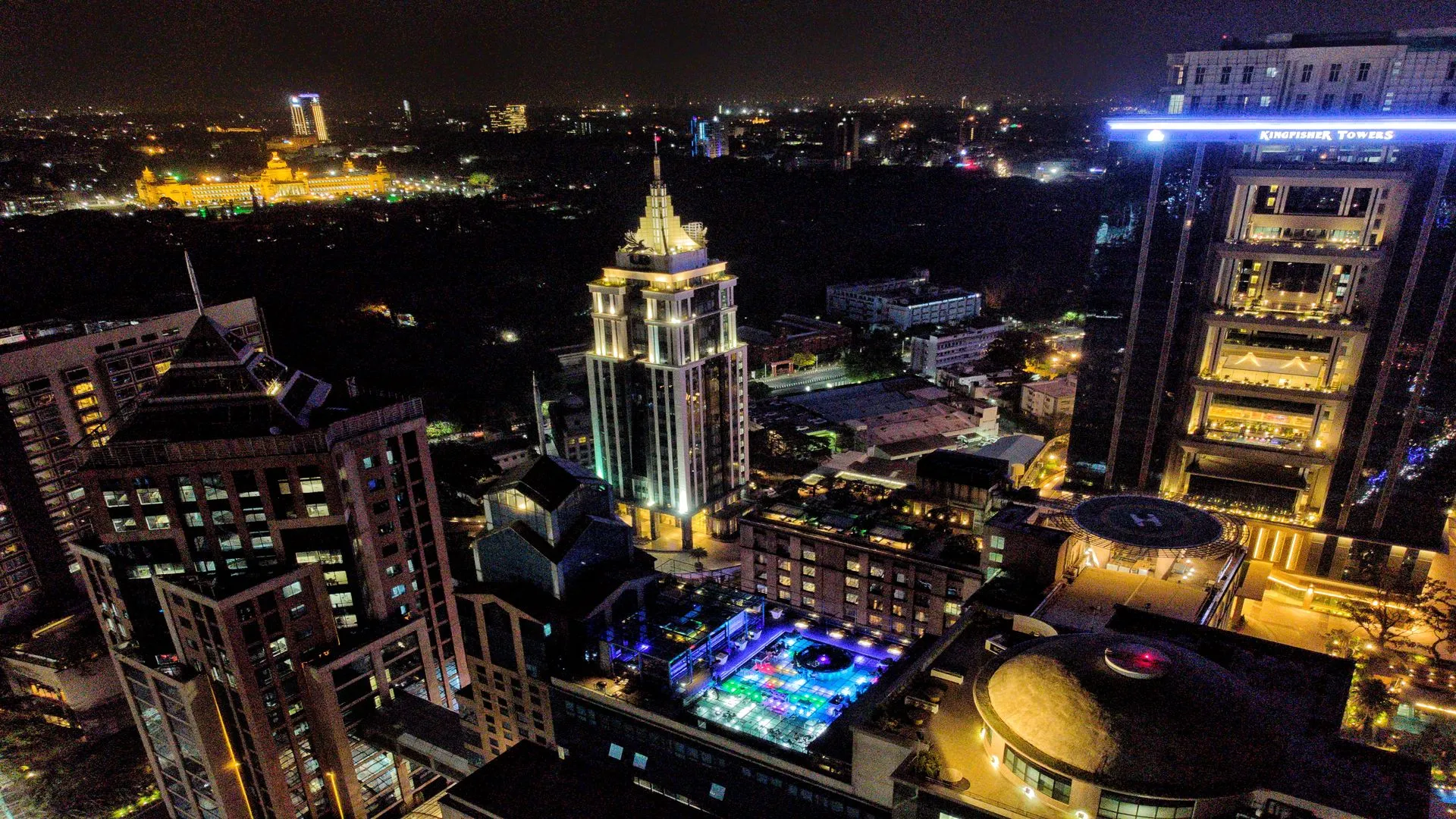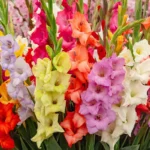
Bangalore, often referred to as the “Silicon Valley of India,” is a city that seamlessly blends tradition with modernity. Known for its technological prowess and vibrant culture, Bangalore boasts a rich history and diverse heritage. From lush botanical gardens to pioneering hydroelectric power stations, the city offers a unique mix of historical landmarks, educational institutions, and cultural festivities. Here are 25 fascinating facts that highlight the essence of Bangalore, showcasing its significance as a hub of innovation, culture, and history.
Lalbagh Botanical Garden: Founded in 1760 by Hyder Ali, the then ruler of Mysore, Lalbagh Botanical Garden is one of the largest botanical gardens in Asia, spanning 240 hectares (593 acres). It was further developed by his son Tipu Sultan and features rare plant species from Persia, Afghanistan, and France. The garden is home to a 3,000 million-year-old rock formation, known as the Peninsular Gneiss. Notable attractions include the Glass House, modeled after London’s Crystal Palace, and the annual flower shows that draw thousands of visitors. The garden also contains an extensive collection of tropical and subtropical plants, and it serves as a vital center for botanical studies and conservation efforts.
Hydroelectric Power: In 1897, Bangalore became the first city in Asia, outside a British Presidency, to have a functional hydroelectric power station. The Shivasamudram Generating Station, located on the banks of the Cauvery River, was inaugurated to harness the river’s power, providing electricity to Bangalore and the Kolar Gold Fields. This pioneering project marked a significant milestone in India’s industrial development, showcasing the potential of renewable energy sources. The station’s establishment facilitated the growth of industries in Bangalore, transforming it into a modern urban center and laying the groundwork for its future as a technological hub.
Indian Air Force Museum: Established in 1967, the Indian Air Force Museum in Bangalore is a testament to India’s rich aviation history. It showcases an extensive collection of aircraft, including vintage models like the Westland Wapiti, which was one of the first planes flown by the Indian Air Force, and more contemporary jets like the MiG-21. The museum also houses various artifacts, including aircraft engines, missiles, and uniforms, offering a comprehensive view of the evolution of aviation technology in India. Educational programs and guided tours provide visitors with insights into the pivotal moments of Indian air defense, making it an important educational resource.
Bangalore Cantonment: Established in 1806, the Bangalore Cantonment is the oldest active military base in India. It was originally set up by the British East India Company as a strategic military garrison. The cantonment has housed several prestigious regiments over the years, including the Madras Sappers and the 1st Battalion of the Parachute Regiment. The area around the cantonment has grown into a bustling urban center with a blend of colonial-era architecture and modern infrastructure. It remains a significant military hub, contributing to Bangalore’s reputation as a key defense and aerospace center in India.
Silk Production: Bangalore, once renowned as the “Silk City,” played a pivotal role in India’s silk industry. The Krantipete Silk Farm, established in 1906, stands as a historical landmark of this legacy. The city became a major center for sericulture, producing high-quality silk that was in demand both domestically and internationally. Bangalore’s silk was known for its lustrous texture and durability, making it a preferred choice for garments and textiles. The city’s prominence in silk production not only bolstered the local economy but also contributed to the preservation and development of traditional silk weaving techniques.
Pub Capital of Asia: Bangalore is unofficially known as the “Pub Capital of Asia,” with over 1,200 pubs scattered throughout the city. This vibrant nightlife scene attracts both locals and tourists, offering a wide range of experiences from traditional pubs to modern lounges and craft breweries. The city’s pub culture began to flourish in the late 20th century, coinciding with its growth as an IT hub. Areas like MG Road, Brigade Road, and Koramangala are particularly famous for their lively bars and nightlife. This dynamic pub scene has made Bangalore a popular destination for young professionals and nightlife enthusiasts.
Literacy Rate: Karnataka, the state where Bangalore is located, boasts the highest literacy rate in India, at 86.63% according to the 2011 census. This achievement reflects the state’s commitment to education and literacy programs. Bangalore, as the state’s capital, is home to numerous prestigious educational institutions, including the Indian Institute of Science (IISc) and the National Institute of Fashion Technology (NIFT). These institutions attract students from across the country and abroad, fostering an environment of academic excellence and innovation. The high literacy rate is also indicative of the city’s progressive outlook and investment in human capital.
Biotech Hub: Bangalore is known as India’s “Biotech Capital,” housing nearly half (47%) of the country’s biotech companies. The city is home to prominent firms like Biocon, the largest biotech company in India, founded by Kiran Mazumdar-Shaw in 1978. Bangalore’s biotech industry spans various sectors, including pharmaceuticals, agriculture, and healthcare. The presence of research institutions like the National Centre for Biological Sciences (NCBS) and supportive government policies have fueled the growth of this sector. The city’s biotech firms are involved in cutting-edge research and development, contributing significantly to advancements in medicine and technology.
Indian Institute of Science (IISc): The Indian Institute of Science (IISc) in Bangalore, established in 1887, is one of India’s premier institutions for scientific research and education. Founded with support from industrialist Jamsetji Tata, IISc has consistently ranked among the top universities globally. It offers advanced degrees in science, engineering, and technology, and is known for its rigorous academic programs and state-of-the-art research facilities. The institution has produced numerous notable alumni, including Nobel laureates and leading scientists. IISc’s contributions to research and innovation have had a profound impact on India’s technological and scientific landscape.
Vidhana Soudha: The Vidhana Soudha, completed in 1956, is the seat of the Karnataka State Legislature and the largest legislative building in Asia, sprawling over an area of 60 acres. This imposing structure, built in a Neo-Dravidian architectural style, features grand granite steps, ornate carvings, and a central dome flanked by four smaller domes. The building houses both the Legislative Assembly and the Legislative Council of Karnataka. It symbolizes the legislative power and political heritage of the state. The Vidhana Soudha is not only a center of political activity but also a major tourist attraction, showcasing the architectural grandeur and cultural heritage of Karnataka.
A. R. Rahman: A. R. Rahman, born in Bangalore, is a globally acclaimed music composer known for his innovative and eclectic approach to music. He has won multiple Oscars, including for his work on the film “Slumdog Millionaire.” Rahman’s contributions have redefined Indian film music, blending traditional Indian classical music with electronic music, world music, and orchestral arrangements. His compositions for movies like “Roja,” “Bombay,” and “Dil Se” have left a lasting impact on the Indian music industry. Rahman’s studio, the Panchathan Record Inn and AM Studios in Chennai, is one of India’s most advanced recording facilities.
M. Chinnaswamy Stadium: Established in 1973, the M. Chinnaswamy Stadium in Bangalore is one of India’s most iconic cricket venues. It has a seating capacity of 40,000 and has hosted numerous historic matches, including Test matches, One Day Internationals, and T20 Internationals. The stadium is home to the Karnataka State Cricket Association (KSCA) and the Royal Challengers Bangalore (RCB) IPL team. It is known for its lively atmosphere and passionate cricket fans. The stadium also features state-of-the-art facilities, including floodlights for day-night matches and an innovative rainwater harvesting system.
Bangalore Palace: Built in 1887, Bangalore Palace is a stunning example of Tudor-style architecture, reminiscent of medieval castles in Normandy and England. The palace was constructed by Chamaraja Wodeyar, the Maharaja of Mysore, and features fortified towers, battlements, and turrets. Inside, it boasts 1,200 doors and numerous rooms adorned with elegant wood carvings, floral motifs, and intricate paintings. The palace grounds host various cultural events, concerts, and exhibitions. It is a major tourist attraction, offering visitors a glimpse into the opulent lifestyle of the Mysore royalty and the architectural grandeur of the era.
Coffee Culture: Bangalore is often referred to as the “Coffee Capital of India” due to its rich coffee culture. The city boasts numerous cafes and coffeehouses that cater to both traditional and contemporary tastes. South Indian filter coffee is a popular beverage, deeply ingrained in the local culture. Coffee plantations in the nearby regions of Coorg and Chikmagalur supply high-quality beans, making Bangalore a hub for coffee enthusiasts. The city’s cafes range from historic establishments like Indian Coffee House to modern specialty coffee shops, fostering a vibrant coffee culture that attracts both locals and tourists.
Rainfall: Bangalore receives an average of 1,582 mm (62.3 inches) of rainfall annually, making it one of the wettest cities in South India. The city experiences a tropical savanna climate with distinct wet and dry seasons. The monsoon season, from June to September, brings heavy rainfall, which is crucial for replenishing water sources and maintaining the lush greenery of the region. The city’s parks, gardens, and lakes thrive during this period, enhancing Bangalore’s reputation as a “Garden City.” However, the heavy rains also pose challenges such as urban flooding and traffic disruptions.
Languages: Kannada is the official language of Karnataka, but Bangalore is a cosmopolitan city with a significant population speaking multiple languages, including English, Hindi, Tamil, Telugu, and others. This linguistic diversity reflects the city’s status as a melting pot of cultures and communities. English is widely spoken, especially in business, education, and IT sectors, facilitating communication with international clients and visitors. The multilingual environment contributes to Bangalore’s inclusive and multicultural character, making it a welcoming place for people from different parts of India and the world.
City of Lakes: Bangalore is known as the “City of Lakes,” with over 28 lakes within its city limits. These lakes, such as Ulsoor Lake, Sankey Tank, and Hebbal Lake, provide scenic beauty, recreational opportunities, and habitats for diverse wildlife. Historically, these water bodies were created to serve as sources of drinking water and irrigation. However, rapid urbanization has led to pollution and encroachment, posing ecological challenges. Efforts are underway to rejuvenate and restore these lakes through community involvement, government initiatives, and environmental organizations to preserve Bangalore’s aquatic heritage.
Hindustan Aeronautics Limited (HAL): Established in 1940, Hindustan Aeronautics Limited (HAL) is India’s largest public sector aerospace and defense company, headquartered in Bangalore. HAL plays a critical role in the design, manufacture, and maintenance of aircraft, helicopters, and related systems for the Indian Armed Forces. The company has produced several indigenous aircraft, including the Tejas light combat aircraft and the Dhruv advanced light helicopter. HAL’s contributions have significantly enhanced India’s aerospace capabilities and self-reliance in defense production. The company’s facilities in Bangalore include research and development centers, manufacturing units, and training institutes.
Startup Hub: Bangalore is a major hub for startups in India, particularly in the fields of information technology (IT) and e-commerce. The city hosts numerous tech parks, incubators, and accelerators, fostering a dynamic ecosystem for innovation and entrepreneurship. Notable companies that originated in Bangalore include Infosys, Wipro, Flipkart, and Ola. The presence of a skilled workforce, supportive government policies, and access to venture capital have contributed to the city’s reputation as the “Silicon Valley of India.” Bangalore’s startup culture attracts talent from across the country and globally, driving economic growth and technological advancement.
Nandi Hills: Located just 60 km from Bangalore, Nandi Hills is a popular weekend getaway destination offering scenic views, historical sites, and a cooler climate. The hills, standing at an elevation of 1,478 meters (4,849 feet), provide a refreshing escape from the city’s hustle and bustle. Attractions include the ancient Nandi Temple, Tipu Sultan’s Summer Palace, and the Amrita Sarovar lake. The hill station is also known for its trekking trails, cycling routes, and paragliding spots. The picturesque sunrise views from the hilltop draw many visitors, making Nandi Hills a favored destination for nature lovers and adventure enthusiasts.
Ugadi Festival: Ugadi, the Kannada New Year, is celebrated with great enthusiasm in Bangalore, typically falling in March or April. The festival marks the beginning of the Hindu lunar calendar and is a time for new beginnings. Families clean their homes, decorate entrances with mango leaves and rangoli, and prepare traditional dishes like obbattu (sweet flatbread) and pachadi (a dish made from raw mangoes, neem flowers, tamarind, and jaggery). Ugadi is also a time for religious observances, with people visiting temples to offer prayers and seek blessings for prosperity and health. The festive atmosphere is characterized by cultural programs, music, dance, and community gatherings.
Street Food: Bangalore’s street food scene is legendary, offering a variety of delicious and affordable options that reflect the city’s diverse culinary heritage. Popular street foods include masala dosa, a crispy rice pancake filled with spicy potato mixture; vada pav, a spicy potato fritter sandwiched in a bun; and benne dosa, a butter-laden variation of the traditional dosa. Other favorites are idli (steamed rice cakes), chaat (savory snacks), and bhajjis (fried snacks). Areas like VV Puram Food Street, Thindi Beedi, and Shivajinagar are renowned for their bustling food stalls, attracting food lovers from all over. Street food in Bangalore is not just about eating; it’s a cultural experience that offers a taste of the city’s vibrant food culture.
Colonial History: Bangalore was ruled by the Wodeyar dynasty of Mysore for centuries before coming under British control in the 19th century. The British established the Bangalore Cantonment in 1806, which became a prominent administrative and military hub. This colonial era brought significant changes to the city’s infrastructure, including the introduction of British-style education, railways, and public buildings. Landmarks such as the Bangalore Palace and the Bangalore Club are remnants of this period. The blend of British and Indian architecture, along with the establishment of modern civic amenities, transformed Bangalore into a major urban center, setting the stage for its future growth.
Aero India: Aero India, a biennial air show held in Bangalore, is one of the largest aerospace exhibitions in Asia. It showcases the latest advancements in aerospace and defense technology from around the world. The event, organized by the Ministry of Defence, attracts global aerospace companies, defense contractors, and military officials. Aero India features aerial displays, static aircraft exhibits, and seminars on industry trends. The show provides a platform for business opportunities, technology sharing, and collaboration between international and Indian aerospace entities. Held at the Yelahanka Air Force Station, Aero India has become a key event for showcasing India’s growing aerospace capabilities and fostering international partnerships.
Largest Rose: The Lalbagh Botanical Garden in Bangalore holds the record for cultivating the largest rose specimen in India, a Texas Centennial rose with a circumference of 42 feet. This achievement highlights the garden’s dedication to horticultural excellence and its role as a center for botanical research and conservation. The rose garden within Lalbagh features numerous varieties of roses, showcasing a stunning array of colors and fragrances. The annual flower shows, especially the Republic Day and Independence Day shows, attract thousands of visitors and horticulture enthusiasts. Lalbagh’s commitment to maintaining and expanding its plant collections ensures it remains a premier botanical garden in Asia.
Frequently asked questions about Bangalore:
What is Bangalore Nicknamed?
Bangalore has several nicknames, each reflecting a different aspect of the city.
Silicon Valley of India: This nickname acknowledges Bangalore’s position as a major hub for information technology (IT) companies and startups. The city houses numerous IT giants and fosters a thriving entrepreneurial ecosystem.
Pub Capital of India: Bangalore boasts a vibrant nightlife scene with over 1,200 pubs catering to diverse tastes. The relaxed atmosphere and youthful energy make it a popular destination for socializing and unwinding.
What Language is Spoken in Bangalore?
Kannada is the official language of Karnataka, the state where Bangalore is located. However, Bangalore’s cosmopolitan nature makes it a multilingual city. English is widely spoken in business, education, and daily interactions. Additionally, significant populations speak Hindi, Tamil, Telugu, and other languages, reflecting the city’s diverse demographics.
Is Bangalore a Good Place to Visit?
Bangalore offers a unique blend of history, modernity, and culture, making it an attractive destination for tourists. Here’s a glimpse of what Bangalore offers:
Historical Sites: Bangalore Palace, Vidhana Soudha, Bangalore Museum, and Tipu Sultan’s Fort offer insights into the city’s rich past.
Modern Marvels: The Indian Institute of Science (IISc), HAL Aerospace Museum, and tech parks showcase Bangalore’s scientific and technological prowess.
Gardens and Parks: Lalbagh Botanical Garden, Cubbon Park, and Bannerghatta National Park provide green escapes and diverse flora and fauna.
Lively Culture: Vibrant festivals like Ugadi, a delicious street food scene, and a thriving music and art scene offer a taste of local culture.
What is the Weather Like in Bangalore?
Bangalore enjoys a pleasant climate year-round. Here’s a breakdown:
Summer (March-May): Warm and sunny with average temperatures ranging from 27°C to 35°C (80°F to 95°F).
Monsoon (June-September): The wettest season, with Bangalore receiving an average of 1,582 mm (62.3 in) of rainfall. Temperatures remain moderate, around 24°C (75°F).
Winter (October-February): The most pleasant season, with comfortable temperatures ranging from 15°C to 25°C (59°F to 77°F).
What is the Cost of Living in Bangalore?
The cost of living in Bangalore varies depending on your lifestyle choices. Here’s a general idea:
Accommodation: Renting a one-bedroom apartment can range from Rs. 15,000 to Rs. 30,000 per month (approximately $200 to $400) depending on location and amenities.
Food: Bangalore offers a range of dining options. Street food is very affordable, while fine dining can be expensive. Expect to spend Rs. 200-500 ($3-7) per meal on average.
Transportation: Public transport is affordable, with bus tickets costing around Rs. 20-50 ( $0.30-0.70) Cabs and ride-hailing services are readily available and can be budget-friendly for short trips.
Overall, Bangalore offers a relatively moderate cost of living compared to other major Indian cities.









